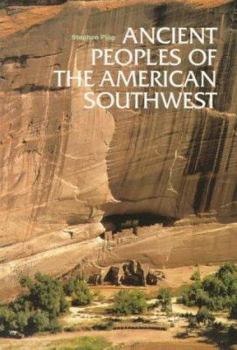Ancient Peoples of the American Southwest
(Part of the Ancient Peoples and Places Series)
Select Format
Select Condition 
Book Overview
Most people are familiar with the famous pre-Columbian civilizations of the Aztecs and Maya of Mexico, but few realize just how advanced were contemporary cultures in the American Southwest. Here lie... This description may be from another edition of this product.
Format:Paperback
Language:English
ISBN:050027939X
ISBN13:9780500279397
Release Date:January 1998
Publisher:Thames & Hudson
Length:224 Pages
Weight:1.38 lbs.
Dimensions:0.7" x 6.4" x 9.5"
Customer Reviews
2 ratings
Good survey of the American SW
Published by Thriftbooks.com User , 24 years ago
I enjoyed this volume because I lived briefly in Arizona and saw some of the ruins (Montezuma Castle and Tuzigoot National Monument) mentioned. I had read a book on Monte Verde as a child but other than this modest brush with SW archaeology, I knew little or nothing about the prehistory of the area. This volume was a good place to start for information about the material data available and the way it has been assembled to create a clearer picture of the settlement of Native Americans across this part of the continent. I found particularly interesting the notion careful custodianship of available resources of an entire area allowed a fairly large population to thrive without agriculture. The author also points out clearly that even at the stage of nomadic existance, when little material evidence is available, the cultural differences attendant upon a lifestyle of wide range migration following animals as opposed to intensive plant use within smaller areas are still distinguishable and can be seen in material remains--or relative lack thereof--over a region under study. Of interest too was the concept that farming, far from being the panacea for mankind it is often seen as being in the modern world, was actually a double edged sword. It encouraged increased population density--with an increase in food and fewer problems for sedentary mothers raising children and an increased demand for labor creating population pressures for which a natural environment would not be able to provide in emergencies--which left the farming peoples much more vulnerable to weather changes and episodes of famine. Schooled as I had been in 1960s and 70s anthropological concepts of "better life through agriculture," it was a novel notion that the hunter-gatherer forbears of early farmers had actually been better nourished and that their mobility and understanding of a larger range of countryside actually had left them less vulnerable to environmental mishaps than agrarian people. The volume also does an excellant job of describing some of the better known and publicized settled cultures of the SW, such as the Hohokam and Anasazi with which I was somewhat familiar having lived in the Phoenix area, and the less well known Mogollon and Mimbres (known more for their lovely pottery) cultures. The book is well illustrated with maps, drawings and photographs that will help give the reader a fuller understanding of the written information. It also sticks to the interpretation of the data described rather than going into elaborate detail regarding actual excavation in the region, which would probably lose the average reader on the subject. I found the book very informative on the subject, and wish I'd had it to read before I lived in the area. I would probably have gotten more out of my stay.
Excellent First Introduction to the Indians of the Southwest
Published by Thriftbooks.com User , 25 years ago
This book is BASIC in its context...don't expect any major revelations except, of course, if you haven't read anything about the Native Americans of the Southwest. It is beatuifully illustrated with some color photos, many excellent charts & maps, and many many turn of the century photgraphs of the area. I live in Phoenix so many of the places are familiar to me. It is amazing to see a freeway going over a Hohokam ballcourt or to note that many of the canals in use TODAY in Phoenix began as Hohokam irrigation canals. All in all, a nice book. The publishers could have cut costs a little, though, if they had used regular paper instead of the heavy glossy paper, but the photos look so great on the heavier paper it is worth the price.







